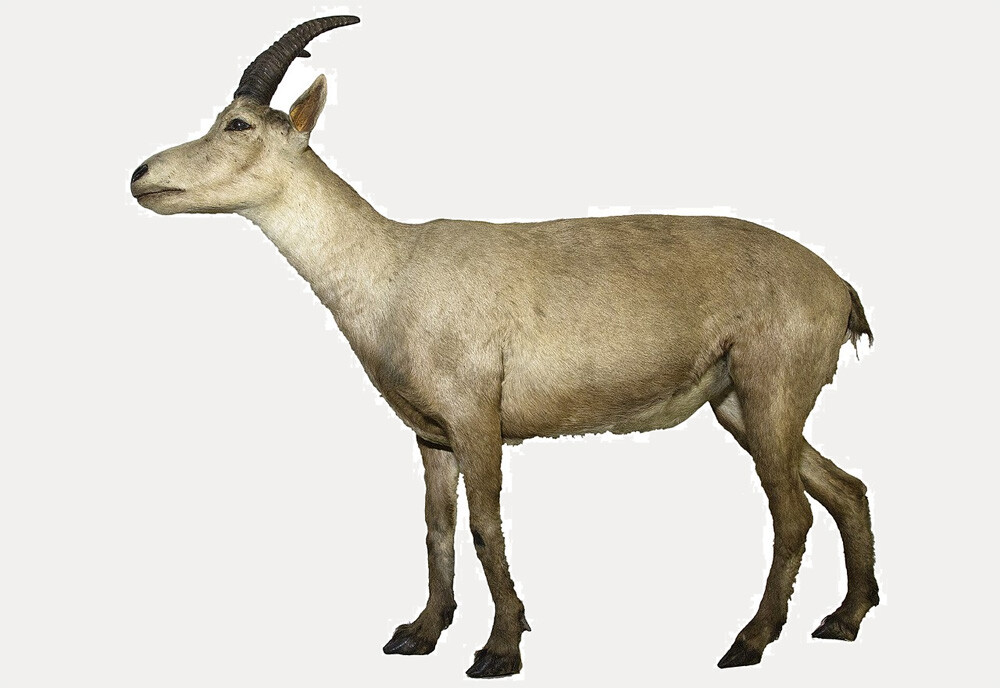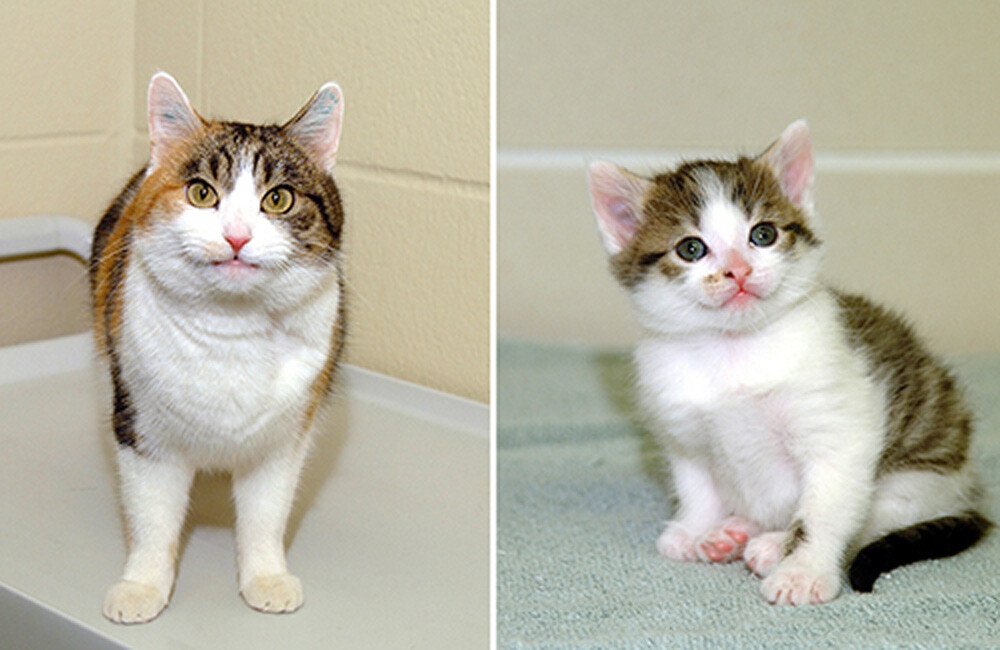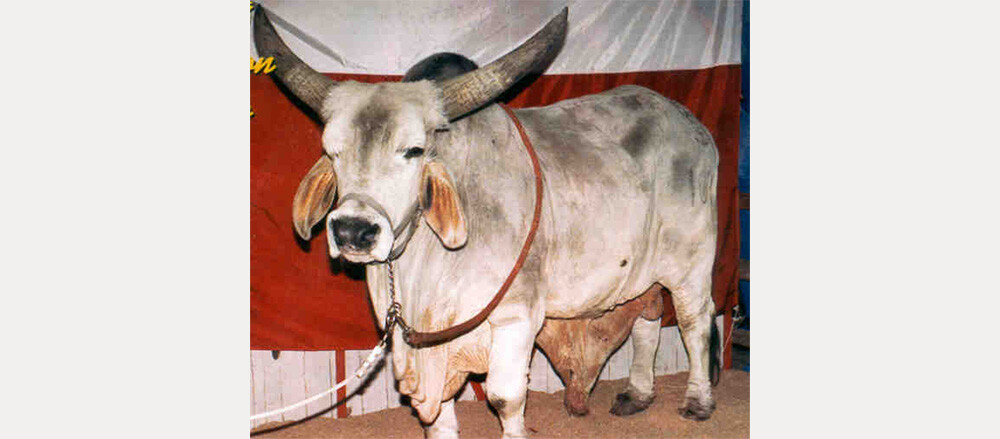There are many reasons for cloning — terrible reasons, mostly. For example, Barbra Streisand cloned her dog Samantha twice, apparently out of devotion to her. Neither of the new pups are Samantha resurrected, so she should have just adopted two new dogs who wanted homes. Then there was the dentist who bought John Lennon’s tooth in hopes of cloning the man. This move has been widely criticized as unethical because it was proposed by a dentist, so we must assume everything he does is evil.
There are probably also a few good reasons for cloning, apparently. But the following stories of cloning gone wrong don’t quite make that case.
The Bull That Came Back Bad
Many animals who get cloned today are the deceased pets of grieving owners, like those Barbra Streisand clones. Over in Korea, a lab has cloned hundreds of pet dogs, for the price of $100,000 each. But like we said, the clone is not the old pet resurrected — the old dog is in heaven; this is confirmed. The clone may also not have the original’s personality.
Don’t Miss
Consider the case of Chance the bull. Chance was a famously docile animal. He appeared in the Vince Vaughn movie The Locusts and on Letterman, and people loved showing up and getting their photo with him. When he was nearing death, his owner Ralph Fisher asked Texas A&M about cloning. The university lab was up for the idea, because 21-year-old Chance would be the oldest animal ever cloned, and that sounded cool.
The cloning was a success, and they dubbed the new bull Second Chance. It looked like Chance of course, as the two were genetic twins. But if they thought the calf would grow up to be just as gentle as its forebear, that was a whole lot of bull. On its second birthday, it attacked Ralph, and he just barely escaped a goring. Then a year later, he didn’t escape a goring. Second Chance tossed him and tore into him, fracturing his spine and ripping open his scrotum.
Clearly, Second Chance was bitter about reproduction in general and was trying to end the cycle. Human cloning is currently illegal and still does require scrotums — for now.
The Man-Cow Hybrid
Yes, human cloning is illegal. But that hasn’t stopped early cloning scientists from taking their first halting steps toward it.
The egg cells of cattle are capable of developing clones under our prodding, as we’ve established. Late in 1998, a New Jersey company turned one of these eggs into an embryo. But instead of using DNA from a donor cow, they used DNA from the leg of a man. Not many people today know this happened, and the controversy is only remembered (if it’s remembered at all) from one widely memed line from George W. Bush, where he called for a ban on “creating human-animal hybrids.”
The Jersey lab was not aiming to carry this embryo to term in a cow’s uterus. The goal here was to tease the cell into turning into a human stem cell, which has all kinds of uses. But they destroyed the embryo at 12 days. The reasoning here was that at 14 days, it might be considered human, based on how long normal human embryos take to implant, so they were sending the world a message about what was possible without actually growing humans.
Had they gone further, their move would have been much more controversial than it was, which is surprising, because we thought America loved cowboys.
The Goat That Went Extinct Twice
The best reason for cloning a species rather than simply breeding it using conventional means is if the species can’t breed using conventional means. For example, we might try cloning to revive a critically endangered species where every specimen is infertile. Or, if we locate samples, we can try cloning species that are completely extinct. We could even display the resulting animals in a park of some kind, and this will be totally safe, so long as we spare no expense.
In 2009, we actually did bring back an animal that had gone extinct. It wasn’t a dinosaur, no, and nor was it one of those mammoths whose frozen flesh we keep stumbling on. It was the Pyrenean ibex, a type of mountain goat, also known as the bucardo. The last bucardo died in January 2000, hit by a falling branch in a most cartoonish manner.

We made it a point to freeze some skin from that last bucardo before that branch encounter. And so, in 2003, we cloned the species, using different sort of goat as the host. They implanted 208 goats with embryos. Seven became pregnant. One actually did give birth, which meant we had brought the Pyrenean ibex back from extinction.
The kid then died immediately. So, the bucardo has the distinction of being the first species to go extinct two separate times.
The Wrong Cat
Like we said, a cloned animal might not resemble the original in terms of personality. It also might not even resemble the original physically. Take the first ever cat to be cloned.
This was done by the same Texas A&M lab that cooked up Second Chance the bull, and they named this cat “CC,” which means both carbon copy and copycat. Playful CC acted different from the DNA donor, shy Rainbow. She also looked different. Rainbow was calico, which is what we call cats with three colors, including orange patches. CC was a tabby.

You might conclude then that coats aren’t genetic. Coats are genetic, but CC shows that a clone might not express all the genes it got from the donor. Whole chromosomes can become inactive, and DNA can otherwise change between fertilization and birth, something we didn’t always know was possible.
So, CC failed at being a carbon copy. The only thing she succeeded at was being a happy cat. She gave birth to a litter at five years old, becoming the first cloned pet to bear offspring, and she went on living with them till she died at the impressively advanced age of 18.
The Montana Testicle Smuggler
Montana man Arthur Schubarth had a slightly different motive than the other people we’ve talked about today. He owned a ranch and wanted to raise a new, larger breed of sheep so that people could pay him for the privilege of hunting them.
His plan was to make a hybrid between the huge Rocky Mountain bighorn sheep and the largest sheep in the world, the Marco Polo argali sheep from Kyrgyzstan. To do this, he obtained Marco Polo tissue and separately bought bighorn testicles. Then he got a lab to shake those into cloned embryos, which he implanted personally into a local ewe. He dubbed the result the Montana Mountain King.

He broke various wildlife trafficking laws in the process, so Fish & Wildlife confiscated the animal, and authorities arrested him. He ultimately did get six months in prison for the scheme, but prosecutors didn’t seek prison for him. For one thing, he was 81 years old. Also, they found it quite impressive that he’d managed to clone an animal, so their sentencing memo actually congratulated him on managing that.
No one asked the Montana Mountain King about his perspective. Maybe he does regret being alive, or maybe he’s thankful. Or maybe he’s delicious, because the government has ordered him slaughtered, with his meat donated to a food bank.
Follow Ryan Menezes on Twitter for more stuff no one should see.

